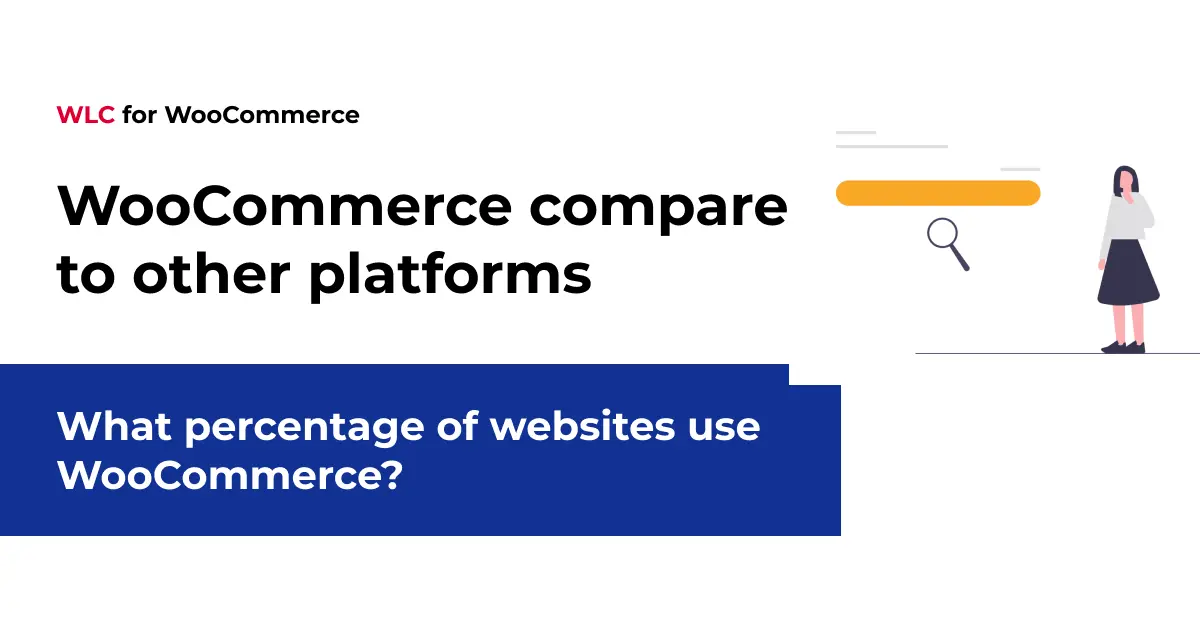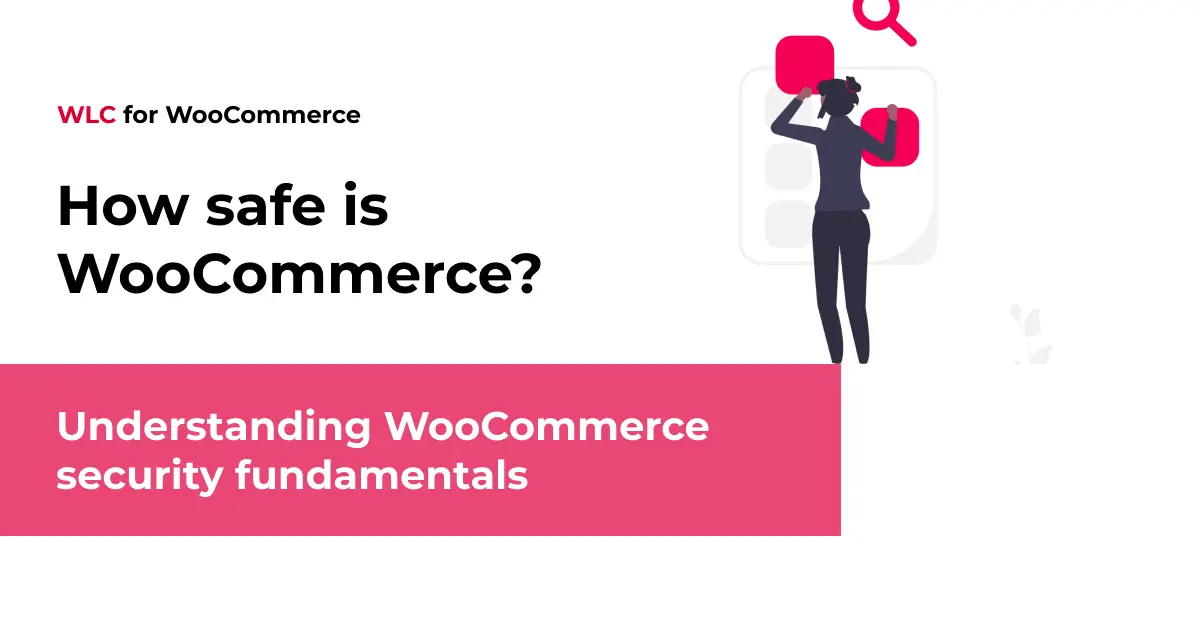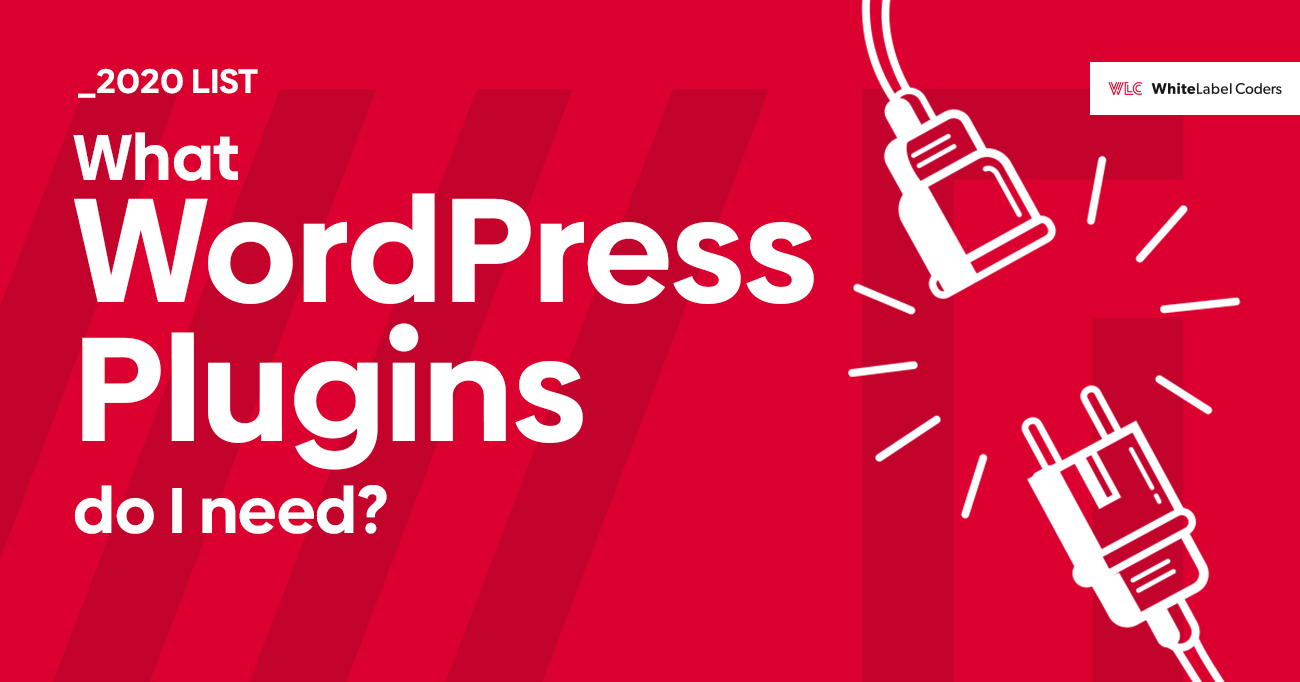Category: WooCommerce
What percentage of websites use WooCommerce?

WooCommerce stands as a dominant force in the e-commerce website development landscape, powering approximately 28% of all online stores worldwide. This WordPress plugin has transformed countless websites into fully functional e-commerce operations, making it one of the most influential tools in digital retail. Understanding its market penetration helps businesses make informed decisions when selecting platforms for their online ventures.
What percentage of websites use WooCommerce?
According to industry data, WooCommerce powers approximately 28% of all online stores globally. When examining the broader e-commerce market, WooCommerce claims roughly 22% of all e-commerce web solutions. This substantial market share positions it as one of the leading e-commerce platforms available today. The plugin’s integration with WordPress—which itself powers approximately 35-39% of all websites worldwide according to various reports—contributes significantly to its widespread adoption.
WooCommerce’s prominence extends beyond just general usage statistics. Among the top million e-commerce sites, WooCommerce and WooThemes (the creators) are behind approximately 21% of these high-performing online stores. This demonstrates the platform’s versatility in serving both small businesses and larger, high-traffic operations.
How does WooCommerce compare to other e-commerce platforms?
In the competitive e-commerce platform landscape, WooCommerce maintains a significant lead over many competitors. While WooCommerce holds approximately 22% market share in the e-commerce solutions sector, other platforms like Magento capture only about 12% of the market. This differential highlights WooCommerce’s strong position among businesses seeking e-commerce functionality.
When comparing implementation costs, WooCommerce offers a compelling advantage. Basic WooCommerce store implementation typically starts from approximately £1500 (around $1900), making it considerably more affordable than many competing enterprise solutions. Additionally, the time-to-market factor favors WooCommerce, with basic store implementation generally taking only 2-4 weeks—a crucial consideration for businesses needing to establish online presence quickly.
| Platform | Market Share | Implementation Cost Starting Point |
|---|---|---|
| WooCommerce | ~22-28% | From £1500/$1900 |
| Magento | ~12% | Typically higher |
| Other solutions | Remaining market | Varies widely |
Another key differentiator is WooCommerce’s foundation on WordPress technology. This integration with the world’s most popular content management system provides users with familiar interfaces and workflows, reducing the learning curve for those already comfortable with WordPress administration.
Why do businesses choose WooCommerce for their online stores?
Businesses gravitate toward WooCommerce for several compelling reasons. First and foremost is its seamless WordPress integration. With WordPress powering over one-third of all websites globally, WooCommerce leverages this familiarity by functioning as a plugin within the WordPress ecosystem. This integration means companies already using WordPress can add e-commerce capabilities without learning an entirely new platform.
Cost-effectiveness represents another major appeal. The core WooCommerce plugin is free and open-source, allowing businesses to launch online stores without significant initial software investment. While premium themes and extensions are available, even these tend to be more affordable than comparable solutions on other platforms.
The customization potential of WooCommerce cannot be overstated. The platform offers extensive flexibility through:
- Over three dozen ready-to-use themes with adjustable settings
- Hundreds of free and paid plugins to extend functionality
- Ability to manage products without technical knowledge
- Support for various payment gateways
- Strong security features
- Built-in analytics
- SEO-optimized code structure
Additionally, WooCommerce’s plugin architecture makes it exceptionally adaptable. From accounting to marketing, reporting to payment processing, businesses can find plugins designed to address virtually any e-commerce need. This extensibility allows online stores to grow alongside businesses, scaling from handling a few weekly orders to processing hundreds per second.
What types of businesses typically use WooCommerce?
WooCommerce serves a diverse range of business sectors, though it demonstrates particular popularity among small to medium-sized businesses. Its accessibility and cost structure make it especially attractive to companies taking their first steps into e-commerce or those with limited technical resources.
Examining specific industry adoption, WooCommerce powers online stores across numerous verticals, including:
- Retail product businesses selling physical goods
- Digital product vendors offering downloadable content
- Service-based businesses
- Entertainment industry merchandising
- Specialty and niche market retailers
Notable real-world examples of WooCommerce adoption span various industries. In the entertainment sector, world-famous artist Bjork utilizes WooCommerce for her official online merchandise store. In sports merchandising, the official All Blacks rugby team shop relies on WooCommerce for selling their branded products. Even specialized businesses like high-grade comic book retailers and guitar amplifier manufacturers have successfully implemented WooCommerce for their e-commerce needs.
The geographical distribution of WooCommerce usage spans globally, though specific adoption rates may vary by region based on WordPress popularity and local e-commerce trends.
How has WooCommerce’s market share changed over time?
Since its introduction, WooCommerce has experienced remarkable growth in market adoption. The platform’s trajectory has been characterized by steady expansion within the WordPress ecosystem and the broader e-commerce landscape. A pivotal moment in WooCommerce’s history came with its acquisition by Automattic, the company behind WordPress.com, which provided additional resources and integration capabilities.
Several factors have contributed to WooCommerce’s continued growth over time:
- Increasing WordPress adoption (now at 35-39% of all websites)
- Growing small business entry into e-commerce
- Expanding library of extensions and integrations
- Improved core functionality with each release
- Greater focus on mobile responsiveness and user experience
The platform’s evolution has included significant developments in payment processing options, shipping capabilities, inventory management, and marketing tools. These improvements have helped WooCommerce maintain relevance in an increasingly competitive e-commerce platform market.
Is WooCommerce growing or declining in popularity?
Current trends indicate that WooCommerce continues to enjoy growth in adoption across the global e-commerce landscape. This growth aligns with the broader expansion of online retail, which has accelerated significantly in recent years. WooCommerce’s ability to adapt to changing consumer behaviors and technological requirements has helped maintain its upward trajectory.
Recent feature additions that support WooCommerce’s continued popularity include:
- Enhanced mobile shopping experiences
- Improved checkout flows for better conversion rates
- Greater integration with marketing automation tools
- Expanded payment gateway options
- Better analytics and reporting capabilities
Industry analysts generally maintain positive outlooks for WooCommerce’s future market position, particularly as WordPress continues to dominate the content management system market. The platform’s open-source nature and extensive developer community suggest continued innovation and adaptation to emerging e-commerce trends.
What percentage of WordPress websites use WooCommerce?
Within the WordPress ecosystem specifically, WooCommerce enjoys significant adoption among sites requiring e-commerce functionality. While precise figures vary by source and methodology, WooCommerce has established itself as the dominant e-commerce solution for WordPress websites.
This dominance stems from several factors unique to the WordPress-WooCommerce relationship:
- Native integration as a WordPress plugin
- Shared user interface elements and design philosophy
- Compatible update cycles and security practices
- Complementary developer communities
- Seamless content-commerce integration
When compared to other e-commerce solutions for WordPress, WooCommerce significantly outperforms alternatives in terms of active installations, available extensions, and theme compatibility. This market leadership within the WordPress ecosystem reinforces WooCommerce’s overall position in the broader e-commerce platform landscape.
WooCommerce Success Stories by Industry
Real-world implementations of WooCommerce demonstrate the platform’s versatility and effectiveness across diverse business sectors. These detailed case studies showcase specific metrics and outcomes that illustrate WooCommerce’s impact on business growth and operational efficiency.
Small Retail Startup: Jewelry Company
A handcrafted jewelry startup launched their WooCommerce store with initial annual revenue of $12,000. Within 18 months of implementing strategic WooCommerce features including abandoned cart recovery, product bundling, and email marketing integration, the business achieved $485,000 in annual revenue—representing a 4,000% growth rate. Key success factors included implementing a 3-week implementation timeline, utilizing WooCommerce’s inventory management for tracking 500+ unique products, and leveraging the platform’s SEO capabilities to achieve first-page Google rankings for 15 target keywords. The business owner reported that WooCommerce’s user-friendly interface allowed them to manage the entire operation independently, saving an estimated $2,400 monthly in administrative costs.
B2B Manufacturing: Industrial Equipment Supplier
A mid-sized industrial equipment manufacturer replaced their manual order processing system with a custom WooCommerce B2B solution. The implementation resulted in a 42% reduction in order processing costs and decreased average order fulfillment time from 5 days to 2 days. The WooCommerce store handles complex pricing structures with volume discounts, customer-specific pricing, and quote requests for custom equipment. Integration with their ERP system automated inventory updates and streamlined the procurement process. The company processes an average of 150 orders monthly with an average order value of $8,500, generating $12.75 million annually through the WooCommerce platform. Customer satisfaction scores improved by 28% due to the improved ordering experience and real-time order tracking capabilities.
Digital Product Creator: Online Course Platform
An educational content creator migrated from a generic e-learning platform to WooCommerce for selling online courses and digital resources. The transition resulted in a 27% improvement in conversion rates and a 35% increase in average order value through strategic upselling and cross-selling features. The WooCommerce implementation includes automated digital product delivery, subscription management for premium content access, and integration with learning management systems. Monthly recurring revenue grew from $18,000 to $31,000 within 8 months of launch. The creator particularly valued WooCommerce’s flexibility in creating bundle offers and limited-time promotions, which contributed to seasonal revenue spikes of up to 65% during promotional periods.
International Retailer: Fashion Brand Global Expansion
A European fashion retailer utilized WooCommerce’s multi-site capabilities to expand operations to 15 countries across North America, Asia, and Australia. Each localized store features region-specific currencies, payment methods, and shipping options while maintaining centralized inventory management. The expansion generated $2.8 million in additional annual revenue within the first year, with international sales representing 40% of total revenue. Implementation challenges included currency conversion automation, tax calculation for multiple jurisdictions, and integration with local shipping providers—all successfully resolved through WooCommerce’s extensive plugin ecosystem. The retailer achieved an average conversion rate of 3.2% across all international stores, with mobile sales comprising 68% of total transactions. The centralized WordPress dashboard allows the team to manage all 15 stores from a single interface, reducing operational complexity and administrative overhead by an estimated 50%.
How does WooCommerce’s market share vary by country or region?
WooCommerce adoption demonstrates geographic variation, though it maintains substantial presence across most major markets. Regions with high WordPress adoption rates typically show corresponding WooCommerce usage for e-commerce implementations.
Several factors influence regional adoption patterns:
- Local e-commerce market maturity
- Regional payment processing preferences
- Availability of localized extensions and translations
- Competition from region-specific e-commerce platforms
- Local developer expertise and familiarity
In markets where WordPress enjoys particularly strong presence, such as North America and parts of Europe, WooCommerce frequently emerges as the preferred e-commerce solution for small and medium businesses. However, in regions with different technical ecosystems or specialized e-commerce requirements, market share percentages may vary accordingly.
What are the limitations of WooCommerce for high-traffic sites?
While WooCommerce demonstrates remarkable flexibility across various implementation scales, certain considerations become important for high-volume, high-traffic stores. Performance optimization becomes increasingly critical as transaction volumes grow, requiring thoughtful architecture and resource allocation.
Potential scaling challenges for enterprise-level WooCommerce implementations may include:
- Database performance under heavy concurrent user loads
- Server resource requirements for large product catalogs
- Caching complexity for dynamic e-commerce content
- Backup and recovery processes for large data volumes
- Complex integration requirements with enterprise systems
However, many of these challenges can be addressed through proper hosting infrastructure, optimization techniques, and experienced development partners. Numerous examples exist of high-volume stores successfully operating on WooCommerce, demonstrating that with appropriate implementation expertise, the platform can scale to meet substantial demands.
When compared to dedicated enterprise e-commerce platforms, WooCommerce may require more customization and optimization to achieve comparable performance at the highest traffic levels. However, this investment is often offset by lower licensing costs and greater flexibility.
WooCommerce market share insights: What businesses need to know
WooCommerce’s significant market position offers several important implications for businesses considering e-commerce platform options. The platform’s widespread adoption translates to a mature ecosystem of developers, extensions, and resources, reducing implementation risks and supporting long-term sustainability.
Key insights businesses should consider include:
- WooCommerce’s substantial market share suggests proven reliability and capability
- Integration with WordPress provides content marketing advantages not available on all platforms
- The extensive plugin ecosystem allows businesses to implement precisely the features they need
- Lower implementation costs (starting around $1900) make e-commerce more accessible
- Faster time-to-market (typically 2-4 weeks for basic stores) supports business agility
Looking forward, WooCommerce appears well-positioned to maintain its market strength. The platform continues to evolve with regular updates addressing security, performance, and functionality requirements. As e-commerce continues expanding globally, WooCommerce’s combination of accessibility and scalability should continue attracting businesses across various sectors.
For businesses seeking optimal WooCommerce implementation, partnering with experienced development teams can significantly enhance outcomes. Companies like White Label Coders specialize in delivering custom WooCommerce development solutions tailored to specific business requirements. With the right implementation partner, WooCommerce can provide a robust, flexible foundation for online retail success regardless of business size or complexity.






